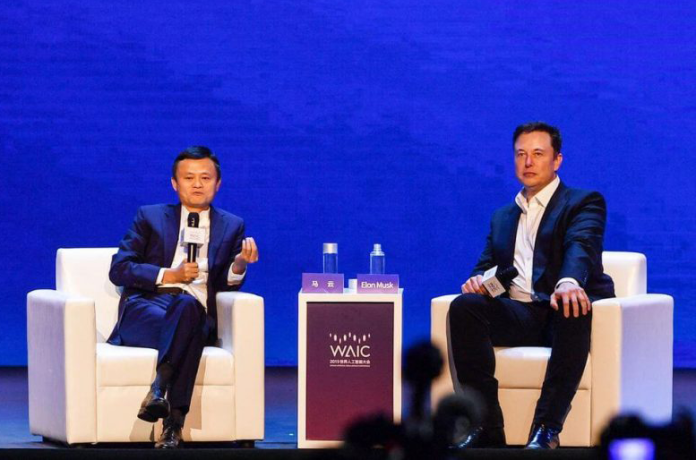Elon Musk and Jack Ma, two of the world’s most influential figures in technology, have each put forward grand visions for humanity’s future, but their approaches are fundamentally different. Musk’s vision is one of physical expansion and interplanetary colonization, while Ma’s is centered on digital connectivity and global economic integration.
Elon Musk: The Mars Colony
Elon Musk’s vision, primarily through his company SpaceX, is to make humanity a multi-planetary species by colonizing Mars. The central motivation behind this is to ensure the long-term survival of the human race by creating a “planetary redundancy” against existential threats on Earth.
Key components of the Mars vision:
- Starship: The centerpiece of this plan is SpaceX’s fully reusable Starship rocket, which is designed to carry both crew and cargo to Mars. The goal is to build a fleet of these vehicles to transport the vast supplies and people needed for a self-sustaining colony.
- Self-sufficiency: Musk’s plan isn’t just about getting to Mars; it’s about establishing a colony that can survive without continuous resupply from Earth. This involves developing technologies to produce fuel from the Martian atmosphere, grow food in Martian greenhouses, and manufacture essential components on-site.
- Timeline: While Musk’s timelines have been famously ambitious, he has stated that a self-sustaining city on Mars could be plausible within 25-30 years, provided there is an exponential increase in the tonnage delivered with each launch window, which occurs every 26 months.
Jack Ma: The Digital Silk Road
Jack Ma’s vision, though less explicitly branded under his name, is a key component of China’s broader “Belt and Road Initiative” (BRI). Known as the Digital Silk Road (DSR), this initiative aims to build a global digital infrastructure that connects participating countries to China’s technology and economy.
Key components of the Digital Silk Road:
- Infrastructure: The DSR involves the provision of “hard” digital infrastructure, such as fiber optic cables, 5G networks, and data centers, as well as “soft” infrastructure, including e-commerce platforms, mobile payment systems, and smart city technology.
- Economic Integration: The initiative is designed to facilitate global trade and connectivity, creating a market ecosystem where Chinese technologies and platforms are dominant. This includes the Electronic World Trade Platform (eWTP), a multi-stakeholder platform aimed at lowering trade barriers for small and medium-sized businesses.
- Geopolitical Influence: The DSR is seen by many as a way for China to project its technological influence, set international standards for emerging technologies like AI, and promote its model of digital governance in developing countries.10 While driven by Chinese tech companies like Alibaba and Huawei, the initiative has significant state support.
A Comparative Analysis
The visions of Musk and Ma represent two different, yet equally ambitious, approaches to shaping the future.
- Focus: Musk’s focus is on a physical, extraterrestrial expansion of humanity, an ultimate escape plan. Ma’s focus is on terrestrial, digital integration, creating a more interconnected and efficient global economy with China at its center.
- Actors: Musk’s vision is primarily a private endeavor led by SpaceX, albeit one that works closely with government agencies like NASA. The Digital Silk Road, while heavily reliant on private Chinese tech companies, is a state-backed initiative with clear geopolitical goals.
- Risk and Reward: Colonizing Mars is an incredibly high-risk, high-reward venture. Success would fundamentally alter the course of human history. The DSR, while facing its own set of political and economic challenges, is a more incremental and arguably less risky strategy with tangible, short-term economic benefits for its participants.
- Impact: The success of Musk’s vision would change where humanity lives. The success of Ma’s vision would change how humanity lives and does business, reconfiguring global power dynamics in the process.
In essence, one vision seeks to build a new world far from Earth, while the other seeks to rewire the world we already have.

